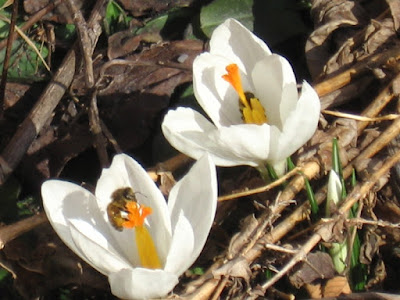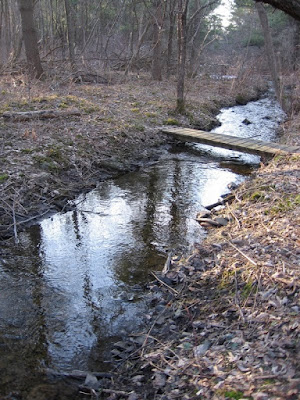 Fresh parsley and horseradish root for Passover
Fresh parsley and horseradish root for PassoverThe more I grow food, the more interested I become in other people’s efforts to grow food. So I was happy to see this article – posted by my cousin Caroline on FaceBook – about two farmers in Vermont who have begun growing wheat and emmer (an ancient grain) to make handmade, wood-fire-baked matzah (marketed under the name Vermatzah) for Passover. The farmers, Doug Freilich and Julie Sperling, of Naga Bakehouse, said they wanted to show what was possible and help keep the land in their area in a productive state. Working with the Heritage Wheat Conservancy and University of Vermont Extension, they are reintroducing wheat varieties once grown in New England but now forgotten. They are also re-connecting traditions.
Such efforts to re-localize food production emphasize the “re-“, reminding people that the recent interest in “local food systems” is anything but recent. It brought to mind an article written by Anna Bender, a distant cousin of my great-grandmother Hannah (Anna) Kaplan Gabrielovich. Anna wrote:
In early March 1900, in the village of Chomsk, on the Polish-Russian border, a group of happy, excited relatives and friends gathered in the kitchen of one of their number whose oven was the largest and best of all the others. I was eight years old at the time, bursting with pride that I was to be a real part of the matzoth baking for the Passover holiday. It would be my task to sift and measure the flour, which had been reaped and ground from specially sown seed for this occasion. My badge of honor, when it was over, was to be covered from head to foot with a fine coating of that holiday flour … [T]he flour [was] taken from me to be mixed and rolled, shaped and baked. Since it was hand-made matzoth the shaping was imperfect, but the love that went into it can never be equaled by the perfectly measured product turned out by factories. ....
When the matzoh were ready they were taken from the oven and distributed equally. A new barrel that had never before been used was lined by Grandfather with straw made of new-mown hay and our family’s share of the matzoth was layered. When the careful packing was done, the barrel was covered with a handwoven, linen cloth. Then it was strapped to Grandfather’s back and he climbed the wooden ladder to the open attic where the matzoth were to be stored until the happy night a month away when the story of our liberation … would be celebrated. The hastily baked, unleavened bread which the Israelites took with them when they fled is called “the bread of our affliction,” but I know it only as the bread of my joy. … (Christian Science Monitor, Feb. 6, 1979.)

Fresh horseradish root
We don’t grow wheat (at least not yet), and we have no choice but to eat the “perfectly measured” factory product. But we do grow, grate and preserve our own horseradish. I started my horseradish plot with a piece of root from Caroline’s father Norman’s garden in western Massachusetts. (A “piece of root” is all you need to grow a sizeable crop of this rather aggressive plant.) Put it in an out-of-the way spot, and dig it up when you need some – especially early spring and late fall. We put some in our vegetable garden proper, knowing better, but we don’t much mind cutting back the large leaves when they threaten to overwhelm nearby plants and digging almost all of it out each year, knowing that the many “bits” of root left behind will grow again the next year. And I suspect that it acts as a deterrent to some soil-dwelling “pests.”

Making horseradish relish
Preparing horseradish relish is easy. Wash and peel the root. Grate (a food processor works fine). Salt if you wish. Scoop into small jars. Add enough white vinegar to saturate the mixture. The grated root will absorb some of the vinegar, so check back and add more if needed. The relish stores well in the frig for months, but it’s fieriest when it’s fresh.
Last night, we brought our homemade horseradish relish to my synagogue’s community sedar. The fiery, pungent mixture – along with surprised gasping, reddened faces, and lots of laughter – was a hit among the friends at our table, as we repeatedly downed “Hillel sandwiches” (sweet haroset and hot horseradish between two pieces of matzah.) The commercial variety provided in small bowls couldn’t compare. One couple at our table was moving into a new home this summer; we promised them a “piece of root” once they got settled.
As Anna Bender knew, there is both pride and joy in the preparing, as well as the eating and sharing, of special foods. Especially when family and friends are involved. I’m glad to see that tradition continue.
Horseradish photos, Nov. 2009.






























